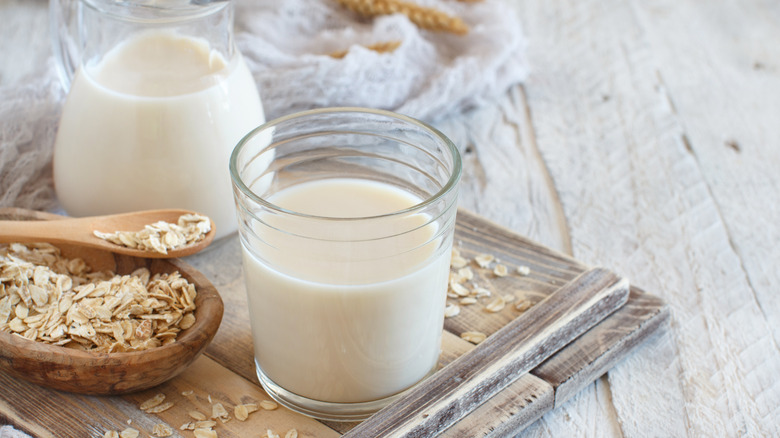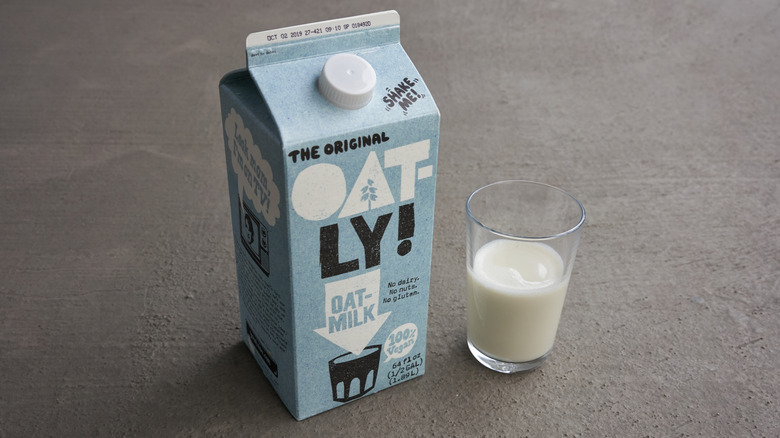The Unexpectedly Recent Origins Of Oat Milk
Oat milk is everywhere, and for good reason. Not only is it creamy, neutral tasting, allergy-friendly, and sensationally froth-able, but it's much less taxing on the environment than other plant-based milk alternatives. In addition to tasting good, a 2010 Institute for Water Education report says oats use less water than any other plant made into milk. Oats also use less land and play a valuable role in farm rotation systems that improve agrobiodiversity and soil health while reducing the need for nitrogen fertilizers (via Tree Hugger, Oatly). It's no wonder oat milk is skyrocketing to the top of the industry.
While almond and soy milk sales flatlined in 2022, a SPINS report from Food Navigator-USA found that oat milk sales rose 50% — equating to nearly $530 million. This meant that despite barely registering in the United States market five years prior, oat milk was now the second-ranked most popular plant-based milk you could buy. That data correlates with responses from certain cafes like Blue Bottle that, in an effort to reach carbon neutrality, switched to using oat milk instead of dairy milk by default in all coffee orders. After the switch, the company said that nearly 70% of customers with milk-based orders request oat milk.
However, it may be a surprise to learn that, despite its widespread adoption in consumers' lives, oat milk only was first created just 25 years ago (via Time).
The origination of oat milk
In the 1990s, Serious Eats says that a food-science professor named Rickard Oste was researching the prevalence of lactose intolerance. Coming from Sweden, a country that loves its dairy, oats are an abundant crop (via Time). So, when Oste got the idea to start from scratch and find a new source for milk that wasn't cows, oats were the obvious choice. His technology used enzymes to break the oats down into a liquid while still maintaining their fibrous nutrients. Then, just like fat from cream is added to dairy milk, Oste added plant-based canola oil to create different levels of fat content. By the mid-nineties, his product, Oatly, took Europe by storm.
Rather than buying ads or relying on brand ambassadors on social media, Oatly built its reputation in Europe by going straight to the front line — AKA the baristas of indie coffee shops (via Digital Marketing Institute). There, they placed their product directly in the hands — or coffee cups, for that matter — of consumers who were most likely to be looking for alternative milk for their coffee orders. After the success their strategy brought them in Europe, Tony Peterson, Oatly's CEO since 2012, followed suit and did the same in the United States. Now, Oatly is so popular that it can't keep up. So, amid stock fluctuations and price increases, it wouldn't hurt to learn to make your own barista-worthy oat milk at home.

